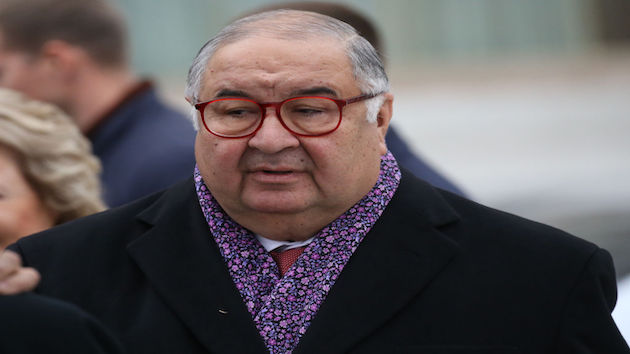
(NEW YORK) — While much of the country is relieved to move into a new phase of the COVID-19 pandemic, millions of families with young, unvaccinated children have looked on with frustration, feeling forced to now raise their guard even higher.
“Just going to the grocery store is less safe now, because we can’t rely on other people protecting him by wearing a mask,” said Rebecca Sanghvi, the mother of a 2-year-old son.
Vaccines for children under 5 years old aren’t expected until sometime in the spring. During his State of the Union address, President Joe Biden said scientists were working hard to get them authorized and pledged to “be ready with plenty of vaccines if and when they do.”
Sanghvi, an instructional coach with the Washington, D.C., Public Schools, her husband and their 5-year-old have led a cautious life during the pandemic to protect their youngest family member.
She knows that there’s a very low chance of her son getting severely sick, but after two years of near-misses, her and her husband can barely afford taking time off work for another quarantine.
They do the necessities, like going to work and attending school, but they don’t dine indoors or go to crowded indoor places, like museums. They don’t see friends indoors. Playdates are at the park, outside.
She wishes the Centers for Disease Control and Prevention had waited for young kids to get access to vaccines before easing the national guidelines for masks, which put 70% of the country in areas where it was no longer required.
“I want to protect my kids. And [masks] seem like not an overwhelming price to pay with all of the unknowns that there are,” Sanghvi said.
Her son is one of about 20 million kids in the U.S. who still can’t get vaccinated — the last age group in the country.
Doctors urge parents to hang on for a few more months
The American Academy of Pediatrics recommends all kids under 5 continue to wear masks — a recommendation that will likely stand until vaccines are available for that group sometime in late spring, said Moira Szilagyi, president of the organization.
The hope is that transmission continues to decrease until then, at least reducing some stress around the virus, and the vaccine could arrive before a potential increase in cases over the summer.
“I share their pain. We see families in our offices and practice settings every day whose children are stuck in this in-between world,” Szilagyi said.
But now is not the time to let your guard down, Szilagyi and other doctors emphasized.
“You should continue to do everything you can to prevent the infection, because we don’t have a great way of telling if your kid will do great or your kid will not,” said Dr. Diego Hijano, a pediatric infectious disease specialist at St. Jude Children’s Research Hospital.
Many parents also worry about their young children developing long COVID, even if the initial infection is mild. But the research is still limited.
Children can get long COVID, experts said, but it’s less common than in adults. When vaccines become available, that is expected to further reduce the risk, as it has for kids ages 5 to 11.
So what are the best ways to stay protected?
In the meantime, experts say that even if other people aren’t wearing masks around kids, they can still be relatively protected if they wear high-quality masks themselves, like surgical masks, N95-equivalent masks made for children, or even cloth masks with at least two layers.
“It will be at least some defense — and enough to make it worthwhile,” said Szilagyi.
Doctors also recommend “cocooning” children with vaccinated people — surrounding them with family and friends who are up to date on their vaccines and boosters.
“If you can get parents, siblings, grandparents on board — that’s the first step because that’s the best way to protect the kid in the house,” Hijano said.
And playing outside without masks is relatively safe, said Hijano, who has young kids.
Traveling has also been proven to be low risk, particularly road trips, and outings to the movie theater, where the seats are relatively spaced out, can be a good activity, he said.
And in the next few weeks, watch for continued improvements in the pandemic’s trajectory.
“Clearly, when masks come off, then that will increase the risk, particularly for unvaccinated children under 5,” said Dr. Dan Barouch, a virologist at Beth Israel Deaconess Medical Center.
“But that is somewhat counterbalanced by the fact that the overall number of cases is much, much reduced compared with where we were a month or two ago and the severity of illness with omicron is lower than the severity of illness with delta or the prior variants,” he said.
Barouch, too, recommended continued mask-wearing and avoiding public indoor gatherings until things improve, as did Dr. Robert Frenck, a vaccine researcher at Cincinnati Children’s Hospital.
“There’s no data to show that the masks are dangerous. There’s no data to show that kids can’t recognize emotion. In fact, there’s data to show kids can recognize emotion because they pick up most of the emotion out of the eyes,” Frenck said.
He urged people to respect one another’s decisions around masks.
“A parent should be allowed to make their decision about a mask,” he said. “And they should feel no recrimination by anyone because they made the decision for their child.”
Copyright © 2022, ABC Audio. All rights reserved.









